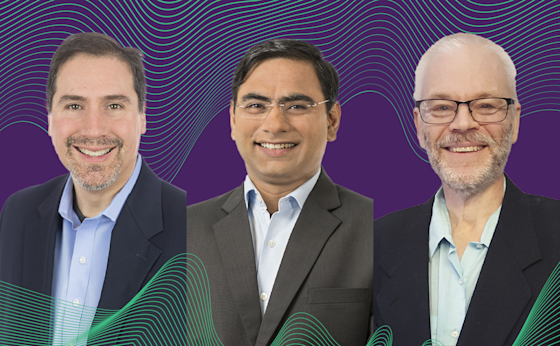Purchase Webinar
Get access to a single webinar that is currently outside of your subscription.
Price: $300 (USD)



Get access to a single webinar that is currently outside of your subscription.
Price: $300 (USD)
Partner with Forrester Research to get access to webinars, insights and frameworks aligned to your role. Shorten the time between a great idea and a great outcome, helping your teams win in the age of the customer.
Tech executives have historically focused their business cases for tech spending on potential gains in process efficiency and employee productivity. In a half-dozen industries, such a focus can still work. But in most industries, the likelihood that tech investment will lead to productivity gains is very poor. Instead, tech executives in these low-productivity industries should focus their tech investments on improving the effectiveness of their business decision-making regarding customers, operations, and balance sheets.
Key takeaways:
Target audience level: intermediate
You'll receive an email with dialing and Webex instructions prior to the Webinar.
See the Webinar FAQs for answers to technical and other Webinar questions.

End-to-end automation means different things to different people. At its narrowest, it’s going from compile to staging. More broadly, it can encompass the entire software development lifecycle, from collecting requirements to eventual retirement of the product and the infrastructure it runs on. Join Naveen, Chris, and Andrew to learn where to best end — and start — your automation journey.Key takeaways: Learn what end-to-end automation means.Discover how to redefine the boundaries of automation.Target audience level: intermediate and advanced

Disruptive technologies are a double-edged sword for environmental sustainability, offering both crucial enablers and significant challenges. On the positive side, technology innovations accelerate energy and resource efficiency, aid in climate adaptation and risk mitigation, monitor crucial sustainability metrics, and even help in environmental conservation. However, the necessary compute power, volume of waste, types of materials needed, and scale of implementing these technologies can offset their benefits.In this webinar, we discuss our latest report, which explores the dual roles of six disruptive technologies, and illustrate the beneficial use cases to guide sustainability and technology leaders on how to use them for good.Key takeaways: Explore the case studies and examples on leveraging disruptive technologies to focus on optimization.Learn about the disruptive technologies that will make the most impact in sustainability in 2025.Target audience level: beginner and intermediate

Forrester’s data and research consistently show how companies that focus resources and strategy on delivering value to customers outperform their competitors on several business measures. Ensuring that B2B customers receive the best postsale experience requires proactive engagement through customer success and customer marketing, as well as personalized and effective reactive engagement whenever they encounter a problem or need support. However, once OpenAI released GPT-4, everything everyone thought they knew about great customer service strategy and execution got turned on its head. Customer service and support teams have the most to gain — or change — through the use of generative, predictive, and agentic AI.Please join Laura Ramos, VP and principal analyst at Forrester, as she explores the latest trends impacting B2B customer service and how generative, predictive, and agentic AI stand to redefine the purpose, role, and results of teams that support B2B customers postsale.Key takeaways: Learn what’s unique about B2B customer service and the changing opportunities that Forrester sees for clients in this space.Discover the top challenges that B2B customers face when delivering effective, differentiating support that truly impacts the customer’s experience.Explore how AI will help solve those challenges while also permanently changing the role and scope of customer service for companies that sell highly considered products and services.Target audience level: intermediate

In today's fast-paced digital landscape, businesses must adapt to ever-evolving technological demands. Join us for an insightful webinar where we delve into the importance of business-optimized networks and how they can transform your organization's efficiency and productivity.Key takeaways: Understand business-optimized networks — what they are and why they matter.Discover benefits of optimization — enhanced performance, security, and scalability.Explore real-world applications — case studies and success stories.Learn implementation strategies — practical steps to optimize your network.Target audience level: beginner and intermediate

B2B buyers are rapidly adopting AI-powered search as one of their primary sources of information. Providers will have to shift their marketing strategy to engage buyers in zero-click environments before they arrive at their sites.This webinar looks at how buyers are using AI-powered search, how zero-click search is impacting the revenue engine, and how to coordinate activity across portfolio marketing, content, communications, and digital to engage buyers in this new environment.Key takeaways: Understand how to adjust your marketing goals and strategies for zero-click search.Learn how to measure your performance on zero-click search.Discover digital, content, and messaging techniques for reaching buyers through zero-click search.Target audience level: intermediate

Today’s public sector environment changes daily. Tech leaders in government groups are pushed to maximize the budget they have. The most logical place to start? Portfolio rationalization. Techniques such as project prioritization, resource allocation, and redundancy elimination are essential to streamline operations and enhance overall efficiency. Although these steps will help drive down cost — the goal is creating a more adaptive platform that is responsive to changing needs and capable of integrating advanced technologies, including AI. This AI-ready framework enables agencies to leverage data-driven insights for better decision-making, predictive analytics for future planning, and automation to reduce manual workloads, ultimately driving innovation and delivering superior outcomes for their constituents.Key takeaways: Learn how to assess and rank projects based on strategic importance and resource availability to ensure optimal portfolio composition.Discover techniques to streamline operations by removing overlapping or unnecessary initiatives, thereby improving efficiency.Gain insights into effective resource management strategies that enhance operational effectiveness and drive better outcomes for government agencies.Target audience level: beginner and intermediate